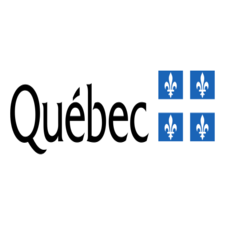Intervention
Type of resources
Topics
Keywords
Contact for the resource
Provided by
Formats
Representation types
Update frequencies
status
-

__The link: *Access the data directory* is available in the section*Dataset Description Sheets; Additional Information*__. The **Harvest and other silvicultural interventions** mapping is produced as part of the ecoforestry inventory of southern Quebec in order to maintain an up-to-date portrait of the forest. Several stakeholders related to forest operations participate in maintaining this forest portrait, including the Regional Operations Sector of the Ministry of Natural Resources and Forests (MRNF), private forest development agencies and major landowners. This map contains information on forest interventions carried out on the territory (e.g. harvesting, thinning, reforestation) as well as the year of work. The period of work begins at the beginning of the 20th century (when information is available) to the present day. The associated information is presented as a series of overlays of interventions. This map covers the commercial territory of public forests and private forests in Quebec. **The minimum mapping area is 0.1 ha. ** __ ⚠️ Note that__ when there is more than one intervention on the same territory during the same year, priority is given to the one that changes the forest cover in a sustainable way (e.g. planting). To have access to all the interventions for the same year (in public forests only), please consult the technical and financial activity reports (RATF) distributed by the Ministry's Regional Operations Sector on the government website of Data Québec. **This third party metadata element was translated using an automated translation tool (Amazon Translate).**
-

Set describing the administrative territories of the barracks on the entire island of Montreal. The [Fire Stations on the Island of Montreal] data set (fire stations) provides the location of the fire stations.**This third party metadata element was translated using an automated translation tool (Amazon Translate).**
-

This file contains the division of the 32 sociological districts in Montreal in 2014. The concept of sociological district does not refer to a formal administrative division. It illustrates Montreal territories (neighborhoods) identified and recognized by local actors on the basis of history, belonging and socio-community organization and the issues involved. Sociological districts are in particular linked to the reference territories of the local consultation tables.**This third party metadata element was translated using an automated translation tool (Amazon Translate).**
-

This data set includes the coordinates of the fire stations of the fire department of the City of Montreal. The data set [Barracks Administrative Territories] (/city-of-montreal/territories-administratifs-des-barracks) provides the territory covered by the barracks.**This third party metadata element was translated using an automated translation tool (Amazon Translate).**
-

This file contains the breakdown of the twelve RUIs in Montreal in 2014. “The RUI is an intervention strategy that differs from sectoral urban, economic and social development strategies, by the objectives it pursues and the concerted and participatory approach that it favors. The ultimate objective of the approach is to significantly and sustainably improve the lot of residents of disadvantaged territories. Achieving this ultimate objective depends on the achievement of very diverse “intermediate” objectives that vary from territory to territory.” Source: City of Montreal**This third party metadata element was translated using an automated translation tool (Amazon Translate).**
-

Following the execution of forest work, the holders must, each year, prepare and submit to the Minister a Technical and Financial Activity Report (RATF) for each of the elements of the authorized annual programming (PRANA). The technical and financial activity report includes several geometric entities allowing the verification of development works on public forest territory. Here is the list: forest roads, point infrastructure, drainage completed, drainage completed, sample plot, intervention polygons, bridge and culvert, reforested species, intervention monitoring results, intervention sector, intervention sampling unit, intervention follow-up sampling unit.**This third party metadata element was translated using an automated translation tool (Amazon Translate).**
-

The Planning for an Environmental Response (PIER) initiative falls under the umbrella of the Government of Canada's Oceans Protection Plan (OPP), whose goal is preserving marine ecosystems vulnerable to increased transportation and the development of the marine industry (https://pm.gc.ca/en/news/backgrounders/2016/11/07/canadas-oceans-protection-plan-preserving-and-restoring-canadas). The PIER was established in response to recommendations made in a 2013 report "A review of Canada's ship-source spill preparedness and response regime " by the Tanker Safety Expert Panel (https://tc.canada.ca/en/marine-transportation/marine-safety/tanker-safety-expert-panel). One of the recommendations calls on Fisheries and Oceans (DFO) to work with Environment and Climate Change Canada (ECCC) to collect and compile information on sensitive species and environments for each Canadian Coast Guard (CCG) response area and make it publicly available. The PIERs’ main mandate is to acquire and update biological sensitivity data under its jurisdiction for preparation and response purposes in the event of an oil spill. With DFO-Science, PIER supports ECCC's National Environmental Emergencies Centre (NEEC) and the CCG in their preparations and responses through the sharing of data on biological sensitivities, the development of response tools and expert advice. In this vein, DFO published an analysis in 2018 that aimed to identify the most vulnerable components of the St. Lawrence in order to prioritize them during data collection if gaps were identified (Desjardins et al. 2018). This exercise highlighted the vulnerability of several biological components and important data gaps, particularly in coastal areas. As a result of this finding, the Quebec region PIEI team embarked on a collaborative project with the Université du Québec à Rimouski (UQAR) to map eelgrass beds, tidal marshes and macroalgal beds. In consultation with other DFO-Science data producers, this team has also created datasets adapted for response purposes, notably regarding bivalves and marine mammals. These layers may be used for oil spill preparedness and response by DFO-Quebec Region's Environmental Incident Coordinator, NEEC and CCG. Several of them, deemed relevant in the first 72 hours following a spill, have been transmitted to the NEEC.
 Arctic SDI catalogue
Arctic SDI catalogue